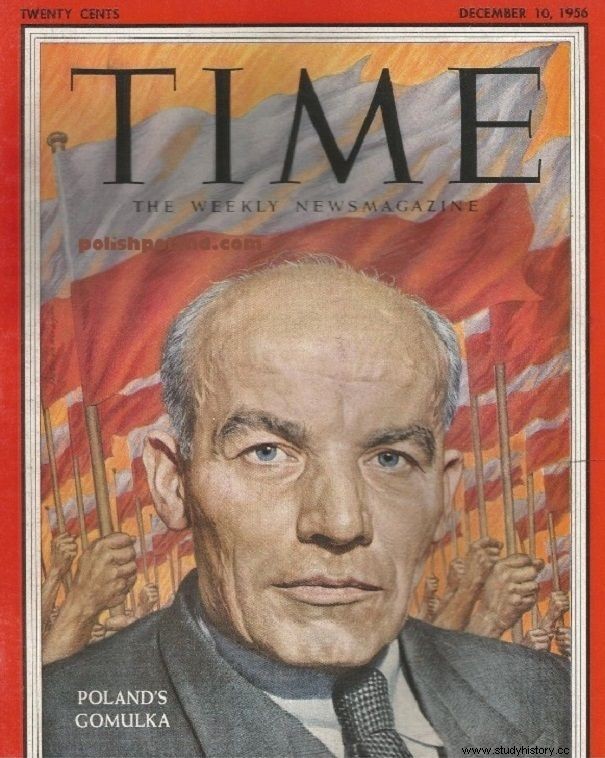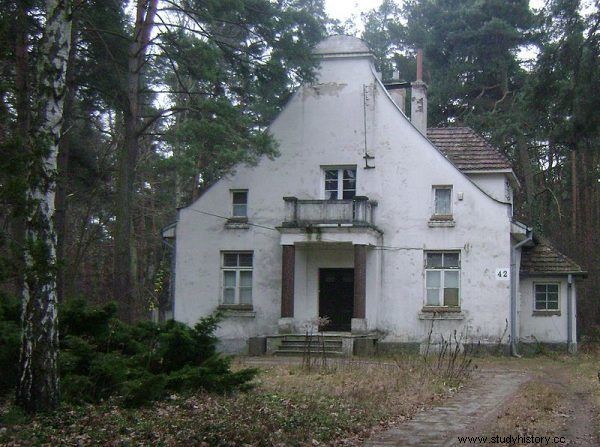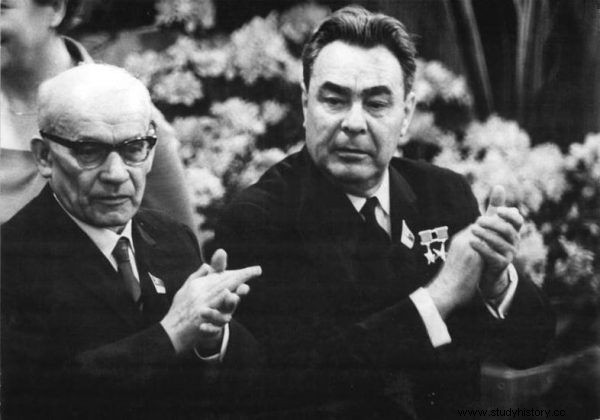During fourteen years of rule, Władysław Gomułka managed to get used to the authorities. After the strikes on the Coast were bloodily pacified in December 1970, he was sidelined. How did he find himself in political retirement?
Gomułka's taking over of power was accompanied by great social enthusiasm and hopes for new, better times. At the very end of his rule, he no longer had any "fans" or supporters in society. In addition, his party comrades charged him with political responsibility for the events of December 1970. The Gomułka era is over.
The loss of the position of the first secretary of the Central Committee of the Polish United Workers' Party was a disaster for a man. So much so it almost led to a stroke . Soon after his resignation, he was hospitalized.
Although he was formally a member of the Central Committee until December 1971, he had no voting rights. The frustrated politician had to find another way to express his opinion. After leaving the hospital, he began sending long letters to party notables. In them, he defended his policy and attacked the new authorities.
Although party dignitaries were not satisfied with the correspondence, they did not intend to punish the former party leader. It was decided to ignore his person and not to return, even in talks, to the times when he was in power in the state. A conspiracy of silence prevailed over Gomułka.
So the former first secretary lived peacefully during his political retirement. In 1973 he even received a villa in Konstancin near Warsaw from the authorities . It was there that he lived with his wife until the end of his life. He spent his time like a typical pensioner. He took long walks with his dog, Szarik, and enjoyed following the then popular TV Sensation Theater "Kobra". He was also interested in the learning progress of his granddaughters. You could say:a typical, caring grandfather.

Loss of popularity and the collusion of silence around him were one of the greatest tragedies in life for Gomułka. In the illustration, companion "Wiesław" as the face of the "Time" magazine (1956).
It was mainly visited by longtime friends and, at the same time, the closest associates of the government, including Zenon Kliszko and Ignacy Loga-Sowiński. For politics was still Gomułka's greatest passion. He passionately read newspapers, watched news programs and looked through current documents. Of course, he criticized Gierek; he followed the birth of "Solidarity" with interest and anxiety.
In 1973, an alleged river-interview entitled "My fourteen years - the confessions of Władysław Gomułka." It spread rapidly. These were not, however, real expositions of the former First Secretary, but fabricated statements. The forgeries were most likely committed by the party notables of the time in order to discredit Gomułka and present their own version of the story.
The man did not leave the matter without comment. He intervened with whom he could to establish those guilty of distributing the document. But he was ignored everywhere. To this day, it is not known who is responsible for the preparation of the fake river interview with Gomułka.

After losing power, he was not left empty-handed at all. The photo shows Gomułka's house during his retirement in Konstancin-Jeziorna.
Perhaps it was under the influence of these events that the former First Secretary began to write down his own diaries, in which he meticulously analyzed his entire life and subsequent political decisions. Unfortunately, he did not manage to complete his enrollment. He did not even reach the years when he assumed the highest position in the party. The diaries end in 1945.
At the beginning of the 1980s, his health problems started again. Comrade "Wiesław" fell ill with lung cancer. He died on September 1, 1982. He was 77 at the time.
In accordance with the will of Gomułka himself, the written memoirs were released only when Poland regained its independence and the people described in them ceased to play leading roles on the political scene.

In the second half of the 1960s, Gomułka began to emphasize more and more on "proper relations" with the USSR. The photo shows Gomułka and Brezhnev in the GDR in 1967.
The death of Władysław Gomułka made his "star" flare up again in a way. Funeral ceremonies organized for him by the then authorities were an expression of appreciation. The coffin with the body was displayed in the Sejm Column Hall for one day; later a dignified funeral was held in Powązki. Another first party secretary, General Wojciech Jaruzelski, said goodbye to the deceased personally.
In the following years, many initiatives appeared to commemorate comrade "Wiesław". In 1986, an avenue named after him was established in Lublin. It was planned to put a likeness of Gomułka on the 1000-zloty banknote and name him after the Defilad Square in front of the Palace of Culture. . In 1991, however, the Lublin thoroughfare changed its patron (today it is Unia Lubelska Avenue), and the remaining ideas ultimately did not work out.
Only the sarcophagus of the former leader, located in the heart of Powązki - at the top of the Avenue of Merit - still towers over the tombstones of famous Poles. This is probably the last visible remnant of the heyday of comrade "Wiesław".
